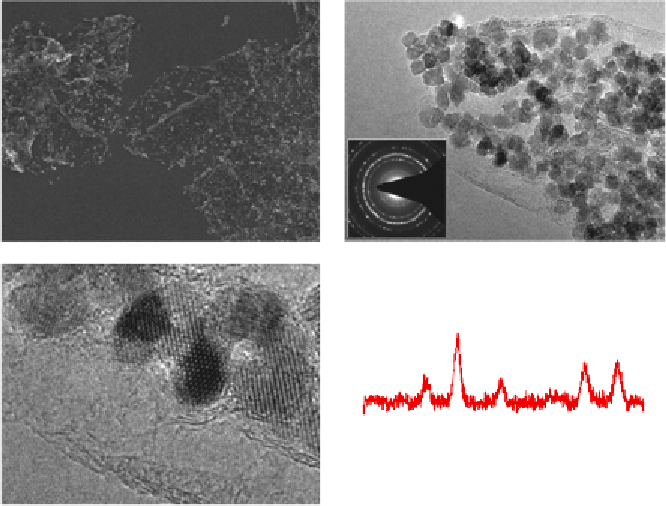Environmental Engineering Reference
In-Depth Information
(a)
(b)
Co
3
O
4
on Graphene
Co
3
O
4
10 nm
200 nm
Graphene
(d)
(c)
311
440
511
220
411
Co
3
O
4
Graphene
5 nm
20
30
40
50
2
θ
(°)
60
70
FIGURE 9.8
SEM (a), low (b) and high (c) magnification TEM images, as well as XPS spectrum (d)
of Co
3
O
4
/grapheme hybrid materials.
Source
: Reproduced with permission from Liang et al. [55].
9.5 APPLICATIONS OF FUEL CELLS
The applications of fuel cells focus on propulsion of vehicles, stationary and
portable power generation [26, 58, 59]. Among them, the vehicular applica-
tion fuel cell systems are the major applications because of their potential
huge impact on the environment, for example, the control of emission of the
greenhouse gases. Most major motor companies work solely on PEMFCs
due to their high power density and excellent dynamic characteristics as
compared to other types of fuel cells [60]. Fuel-cell vehicles (FCVs) have
been developed and demonstrated, for example, General Motors (GM)
Hydrogen 1, Ford Demo IIa (Focus), DaimlerChrysler NeCar4a, Honda
FCX-V3, Toyota FCHV, Nissan Xterra FCV, VW Bora HyMotion, and
Hyundai Santa Fe FCV. Automakers such as Toyota, Honda, Hyudai, Daimler,
and GM have announced plans of commercializing their FCVs by 2015 [61].
Among all applications for fuel cells, the transportation application
involves the most stringent requirements regarding volumetric and gravimet-
ric power density, reliability, and costs [62]. Since a widespread hydrogen










Search WWH ::

Custom Search